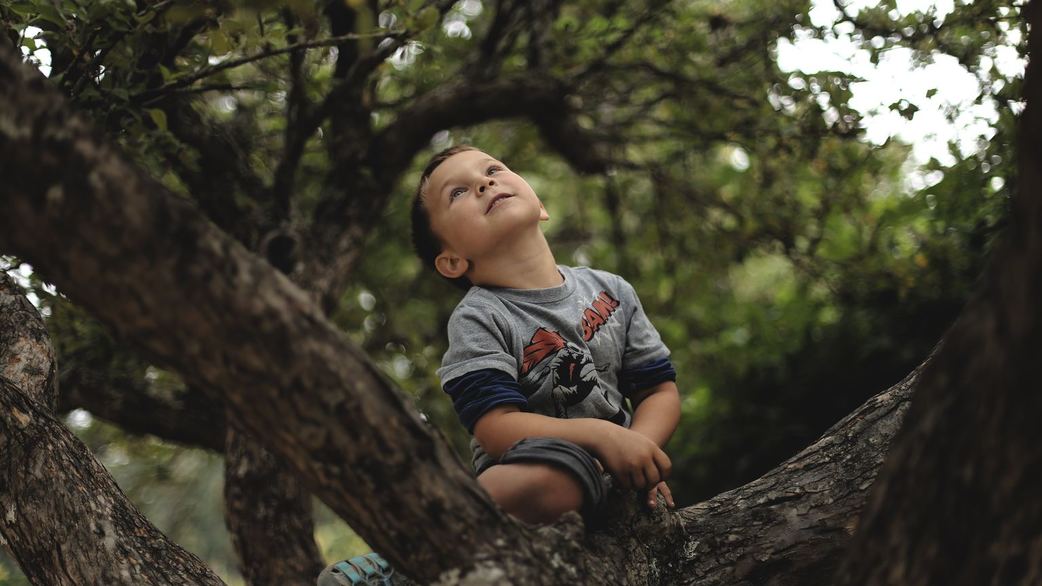The idea of “risky” play may go against every natural instinct we have as early childhood educators to foster a safe and protective early learning environment.
Do we really want our children to be play fighting, climbing trees, or using dangerous tools?
We might worry (not unreasonably) about losing control, dangerous elements, or (worst) serious injuries. However, risky play is a vital part of growth and development in the early years, and the key is appropriate risky play.
Why Risky Play?
There are many benefits to risky play. Risky play creates opportunities for children to learn the strengths and limits of their bodies and gain trust in themselves and their unique capabilities. It allows children to engage in decision making and problem solving, which is a foundational part of developing positive social, emotional, cognitive and physical skills. Children love testing their own physical limits, and doing so helps them build self-confidence when you given them more independence.
As an early childhood educator I completely understand the innate fear we have to keep children safe and make sure they feel secure in the classroom. It’s difficult to embrace unstructured play outdoors, but doing so is a great way to develop your own risk management skills.
We also want to ensure a positive relationship of trust between ourselves and the parents so they can drop their child off everyday with a sense of ease. Though, what we need to understand is that there is a fundamental distinction between risk and danger.
What is that distinction and how can we create safe risk taking opportunities in early years classrooms?
Below are a few ideas that will help to foster risk in your classroom.
Create Opportunity for Unstructured Play
Unstructured play is one of the most simple and effective ways to encourage risk taking. Unstructured play means that for the entire time the child is playing, whether that is with blocks, paint or outdoors, they are making conscious decisions for themselves and they are problem solving through each step. It is a time for them to challenge their cognitive abilities and explore their interests.
When Children Play, Focus on the Process, Not the Product
Creating opportunities where there are no end goals or predetermined steps is a simple and safe way to encourage creative risk taking.
The toddlers in my classroom used to love painting outdoors for example!
Putting large pieces of paper outside with paint and seeing how the children choose to engage with the material.
Eliminating the idea of an end product, allows the child to express themselves on an individual level and creates the chance for them to be free and spontaneous with their learning. This will allow the child to master skills that are meaningful to them.
Bringing the activity outdoors also breaks the dichotomy that painting has to be done indoors and teaches children there is not one linear way to engage in art and creative expression.
Let Children Test Their Bodies
This does not mean, turn your back on the children or let them do whatever they want.
As educators and adults we still have the responsibility to protect children from harm. What this means is letting children test their boundaries so they can learn their strengths and trust their bodies.
This is vital in allowing children to develop resiliency and learn how to safely perceive risk as they grow up. It is our instinct to jump in when we see that we can solve a problem for a child. Letting children test their bodies means we as adults work on holding ourselves back.
Do you see a child reaching for a book that requires standing on their tippy-toes and stretching as high as they can?
Are you right there and able to quickly grab this book for them?
This is where we need to work on appraising risk, and actively working to not be problem solvers for children at all times.
Is the book shelf tipping over and the child could get hurt?
Then yes, we need to step in. Safely hold the bookshelf against the wall and supervise the child, though let the child grab the book on their own. Standing on their tippy toes and stretching the limits of their bodies is a great way to test how far they can reach. It also allows the child to feel a sense of pride and mastery in what they accomplished.
Perceiving safe and appropriate risk is not always easy and is a skill in itself that we have to build. There are also a lot of health and safety standards we have to follow when caring for young children, though as long as a thorough risk assessment is done, there are many opportunities to be created for children to engage in risk and build resiliency!
TIP: Try making a risk assessment chart answering the following questions to help perceive if the benefits of the activity outweigh the risks:
What are the benefits?
What are the hazards/risks? Are they high or low?
Who could be harmed and how?
How can we alter the situation to create a safe risk experience?
Unstructured outdoor play, whether on the monkey bars, the playground swings, or just out enjoying nature should be a normal part of of the ways children learn about risky play. Rough and tumble play doesn’t have to be dangerous, so long as children engage in taking risks with proper adult supervision.
As the children develop their abilities, be sure to track their development and delight parents. Find out how HiMama can help!



A great blog which raises a very important issue. When kids get wrapped in cotton wool as my mum used to say they miss out on valuable life lessons which will ultimately hinder them when growing up! Kids need to develop balance and test new motor skills!
They may fall but they will get up again and be all the better for it!